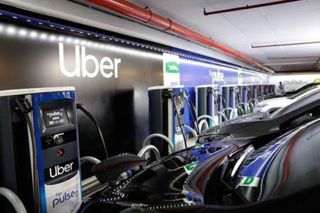Around half (51%) of NHS trusts have installed electric vehicle charging infrastructure on their sites for staff, patients and the wider community to use.
A further 43% either plan to install charging facilities on-site within the next five years or are in early stage planning around how best to integrate such capabilities.
Just 6% had no plans to introduce charge points.
The information came from a Freedom of Information request by power management company Eaton to 173 NHS Foundation Trusts, with 142 responding.
Marc Gaunt, segment lead, commercial buildings, Eaton, said: “Concerns around the UK’s lack of EV charging infrastructure have inhibited EV adoption due to range anxiety.
“Yet EVs and their underlying infrastructure are a vital piece of our route to a low carbon future.
“EVs offer a cleaner mode of transport while smart charging infrastructure not only powers the future of travel but embeds more flexibility into our energy grid to enable decarbonisation at a national level.”
The FOI research also asked the NHS trusts about the impact of EV charge points on their existing electrical infrastructure, and 53% of respondents said they would need greater electrical capacity, while 41% said they may incur additional energy costs through greater peak demand.
Eaton said one-quarter (24%) recognise the potential to create new revenue streams from new charging facilities such as vehicle-to-grid, which allows EVs to store energy and discharge it back to the electricity grid when needed.
This creates a bi-directional relationship that offers up new opportunities for estate and facilities managers.
The FOI found 11% of respondents are currently selling energy back to the grid through energy storage technologies.
One-fifth (23%) plan to start doing this in the next five years, but 65% have no plans to do so.
Gaunt added: “Estate and facilities managers often consider building energy first when considering decarbonisation, but travel and transport is a vital consideration.
“NHS trusts are adopting EV charge points rapidly. Public and commercial buildings will need to follow suit.”






















Login to comment
Comments
No comments have been made yet.